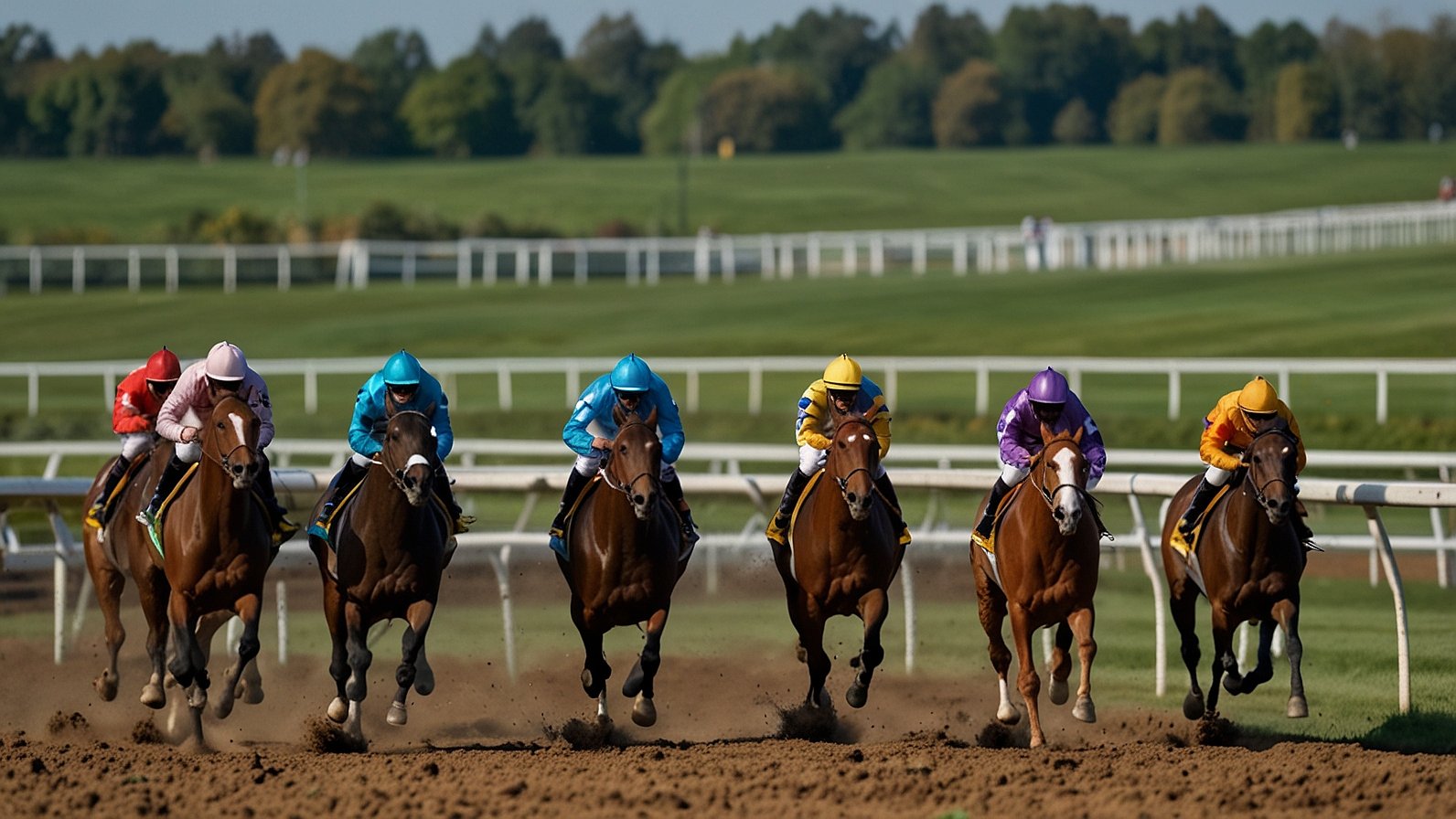Can you feel the electric buzz of the crowd? Can you hear the thunder of hooves and the cheer as the pack rounds the final bend? You don’t need a ticket to the Kentucky Derby to experience this—just a table, a few friends, and a great board game. But before you can shout, “And they’re off!”, you need to know how to play.
Welcome to the wonderful world of tabletop thoroughbreds! Whether you’ve unearthed a classic game from the attic or just bought a shiny new one, this guide will break down the essential horse racing board game rules into a simple, family-friendly template. Think of this as your universal racing program, giving you the core structure that most games follow, plus some fun optional rules to spice up your next race day.
We’ll canter through the basics—from setting up your stable to crossing the finish line—and then gallop into some advanced strategies. Let’s saddle up!
Setting Up Your Stable: A Beginner’s Guide to Game Setup
Before the starting flag drops, you need to get your game ready. While every game is different, most follow a similar pattern. Here’s a quick checklist to get you from the box to the starting gate in minutes.
- Unpack the Board: Lay out the race track. Most boards feature a linear or circular path divided into spaces, leading to a glorious finish line.
- Choose Your Colors: Each player picks a horse token (or a jockey meeple). Pro tip: Argue passionately for your favorite color. It’s a tradition.
- Get Your Gear Ready: Place the dice where everyone can reach them. Shuffle the deck of Action or Movement cards, if your game has them. These often add exciting twists and turns to the race.
- Line ‘Em Up: Place all horse tokens on the designated “Starting Gate” space. No false starts!
The Universal Components of a Great Race:
Most horse racing games include a mix of the following, which form the heart of our core rules:
- The Board: The track itself, often with special spaces.
- Horse Tokens: The pieces you move.
- Dice: Usually standard six-sided dice (d6).
- Cards: For movement, special events, or abilities.
- Betting Tokens (Optional): For those who want a little wager on the side.
And They’re Off! The Core Gameplay Loop
This is the engine of your race. The core horse racing board game rules are all about a simple, repeatable sequence: Roll, Move, and React. It’s a loop that creates tension and excitement with every turn.
How to Move: Dice, Cards, and the Thrill of the Chase
Movement is what makes the race. Here are the two most common systems, which can often be combined.
- The Dice Dash: On your turn, you roll a die (or dice) and move your horse forward that many spaces. It’s simple, chaotic, and perfect for young families. The randomness means a lagging horse can suddenly surge ahead, keeping everyone in the game until the very end.
- The Card Canter: Instead of rolling, you play a card from your hand. A card might say “Move 3 Spaces” or “Gallop Forward 5.” This system introduces more strategy. Do you use your powerful “Sprint” card now, or save it for the final stretch?
Movement Method Showdown
| Feature | Dice-Based Movement | Card-Based Movement |
|---|---|---|
| Core Mechanic | Random roll | Strategic card play |
| Best For | Younger kids, chaotic fun | Older kids & adults, planning |
| Player Control | Low | High |
| Example | Roll a 4, move 4 spaces. | Play a “Steady Trot” card to move 3 spaces. |
Navigating the Track: More Than Just a Straight Line
A boring track makes for a boring race. The best games use the board itself to create drama. As you explain the horse racing board game rules, don’t forget these common track features:
- Lane Changing: Some tracks have multiple lanes. Moving to an inner lane might be shorter but more crowded, while an outer lane could offer a clear path forward.
- Special Spaces: Landing on a space might let you draw a bonus card, force an opponent back, or trigger a random event like a “Water Jump” that costs you a turn. Always check the space you land on!
- The Final Stretch: The last few spaces before the finish line often have special rules, like requiring an exact roll to win or allowing for a final, desperate sprint.
Crossing the Finish Line: How to Claim Victory
The first horse to cross the final space of the track is the winner! It’s that simple. However, some games add a layer of tension by requiring an exact roll to cross the finish line. If you roll a number higher than the spaces you have left, you must “bounce” back. For example, if you are 2 spaces away and roll a 5, you move forward 2 spaces to the finish, then backward 3 spaces. This simple rule can lead to hilarious, nail-biting conclusions where the lead changes hands multiple times in the final moments.
Pop the (imaginary) champagne! You’ve just mastered the basic horse racing board game rules.
Advanced Training: Optional Rules to Turbocharge Your Game
Once your family has the basics down, it’s time to add some depth. These optional modules can be mixed and matched to create a more strategic, “gamer” experience.
Handicaps & Head Starts: Leveling the Playing Field
Is one player consistently dominating? Or are you playing with a younger child? Implement a handicap system! The strongest player (or horse) starts a few spaces behind the starting line, while newer players get a head start. This keeps every race competitive and engaging for all skill levels. It’s a simple but powerful way to balance the game.
The Paddock Shop: Introducing Light Engine-Building
This rule transforms the game from a simple race into a strategic contest of resource management. Here’s how it works:
- Earning Resources: As you move around the track, certain spaces allow you to earn “Energy” or “Skill” tokens.
- Spending Resources: You can spend these tokens to activate powerful abilities on your turn, like:
- Double Move: Spend 2 Energy to take an extra move action.
- Block: Spend 1 Energy to place a temporary obstacle behind your horse.
- Surge: Spend 3 Energy to move an extra 4 spaces instantly.
This “engine” (collecting tokens to power better actions) adds a fantastic layer of decision-making without overwhelming the core fun of the race.
Placing Your Bets: A Family-Friendly Wagering System
For that authentic track feel, add a simple betting pool. At the start of the race, each player gets three betting tokens. In secret, they assign one token to the horse they think will come First, one to the horse they think will come Second, and one to the horse they think will come Third.
When the race is over, players reveal their bets. You score 3 points for a correct 1st place bet, 2 points for 2nd, and 1 point for 3rd. The player with the most points from betting wins the “Top Handicapper” title, which can be a separate victory or combined with your racing performance!
The Winner’s Circle: Your Next Steps
And there you have it! You’re now equipped with a versatile set of horse racing board game rules that can power countless exciting race nights.
Your 5-Step Quick Guide to a Perfect Race:
- Set the Scene: Lay out the track, pick your horses, and shuffle the cards.
- Master the Loop: On your turn, roll dice or play a card to move your horse.
- Watch the Track: Pay attention to special spaces and lane-changing rules.
- Win the Race: Be the first to cross the finish line (sometimes with an exact roll!).
- Level Up: Add handicaps, betting, or a simple resource engine for more depth.
The true joy of these games isn’t just in winning; it’s in the shared moments of anticipation, the groans when someone gets knocked back, and the cheers for an underdog’s surprise victory. So, gather your crew, grab your favorite game, and let the races begin!
What’s your most memorable board game moment? Was it a photo-finish victory or a spectacular comeback? Share your stories in the comments below!
You May Also Like: The Great Ticket Vault: Your Ultimate Guide to Snagging Artistic Gymnastics Olympics Tickets for Paris 2024
FAQs
What happens if two horses land on the same space?
Most games use a simple “bumping” rule. If you land on a space occupied by another horse, you can “bump” that horse back one space. This creates a great deal of player interaction and tactical positioning on the track.
My game has a lot of cards with complex text. How can I make it easier for my kids to play?
For a “family-friendly mode,” sort through the deck before the game and remove any cards with complicated effects. Stick with simple movement cards (e.g., “Move 2,” “Move 4,” “Move 6”) until everyone is comfortable. You can gradually reintroduce the advanced cards later.
Are there any popular horse racing board games that use these rules?
Absolutely! Classics like Winner’s Circle (a fantastic betting and risk-management game) and Longshot use card-driven movement and betting. Camel Up is a wildly popular family game that uses a dice-by-committee mechanic, where players all bet on and influence the same set of camels, and its core principles align perfectly with the rules we’ve discussed.
How long does a typical game last?
Using our core template, a game for 4-6 players should last between 20 and 45 minutes. Adding the advanced rules might extend the playtime slightly, as players have more decisions to make.
What if a player falls far behind and loses interest?
The handicap system is a great preventative measure. But if it happens during a game, the integrated betting system can be a savior. A player whose horse is out of contention can still be deeply engaged in the race, cheering for the horses they bet on to win, place, or show.
Can I create my own horse racing game using these rules?
You absolutely can! This template is perfect for DIY game creation. Grab some paper, draw a track, use buttons for horses, and a standard deck of cards for movement (e.g., red cards move that number, face cards are “Gallop 5”). You’ve just designed your first game!
Is there a way to make the game less random?
Yes. The card-based movement and “engine-building” optional rules are specifically designed to reduce randomness and increase strategic depth. By giving players a hand of cards to choose from or resources to manage, you replace pure luck with meaningful choices.











